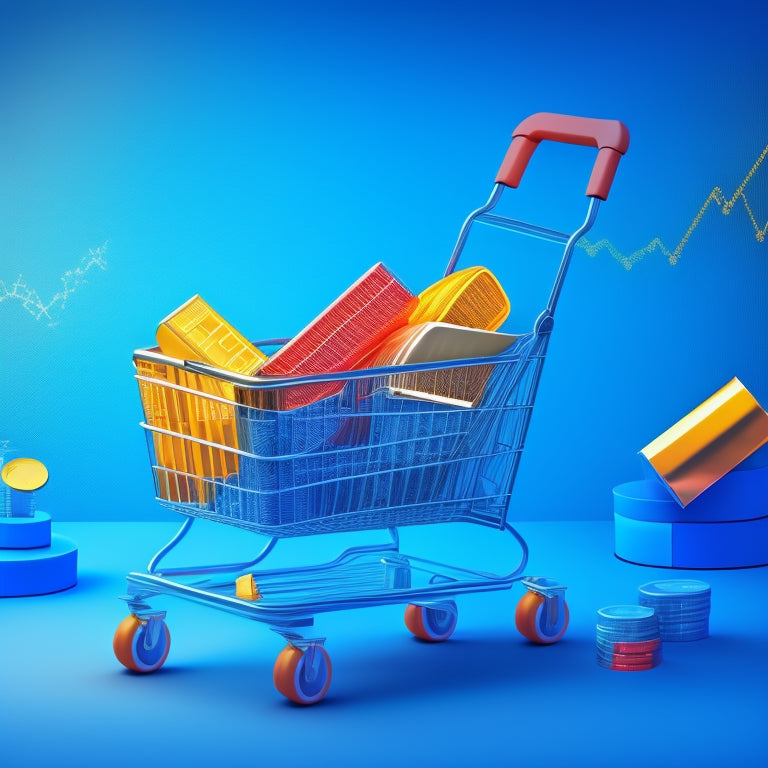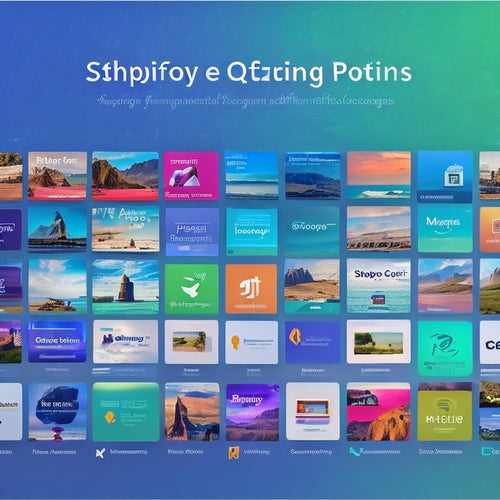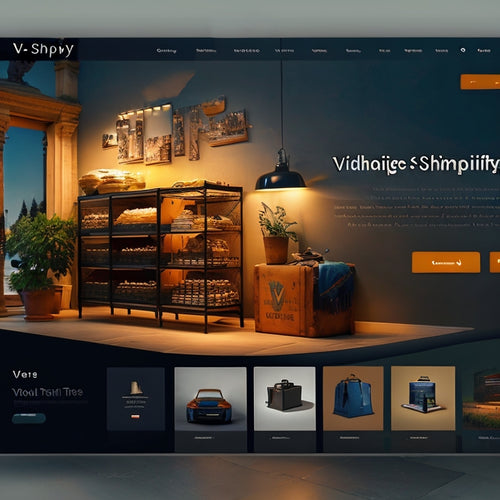
3 Ecommerce Pricing Strategies to Boost Sales
Share
You can boost your ecommerce sales by implementing strategic pricing tactics that tap into customer psychology, adapt to market fluctuations, and outmaneuver the competition. Start by penetrating the market with competitive pricing to capture market share swiftly. Next, influence customer perception of product value with price anchoring, which can increase sales by up to 20%. Finally, adjust prices in real-time with dynamic pricing to match shifting market conditions and customer demand. By leveraging these strategies, you'll be well on your way to maximizing profit and staying ahead of the competition - and there's more to explore to optimize your pricing strategy.
Key Takeaways
• Set competitive prices to undercut rivals, attract price-sensitive customers, and create a sense of urgency with limited-time promotions.
• Implement discount strategies like 'buy one get one free' and '20% off first purchase' to drive sales and boost revenue.
• Use price anchoring to influence customer perception of product value, making sale prices appear more reasonable and increasing the likelihood of a sale.
• Leverage dynamic pricing to adjust prices in real-time, capitalizing on peak sales periods and staying competitive.
• Analyze market trends and customer behavior to optimize pricing for revenue growth and stay ahead of the competition.
Penetrate Market With Competitive Pricing
By setting prices that undercut your competitors, you can swiftly capture market share and establish a foothold in the ecommerce landscape. This aggressive pricing strategy allows you to attract price-sensitive customers who are keen to snag a good deal.
Implementing discount strategies, such as offering limited-time promotions or loyalty discounts, can help drive sales and boost revenue. Additionally, promotional pricing tactics like 'buy one get one free' or '20% off first purchase' can create a sense of urgency, encouraging customers to make a purchase sooner rather than later.
According to a study, 60% of customers make a purchase based on price alone, so it's essential to stay competitive. By pricing your products strategically, you can outmaneuver your competitors and establish your brand as a go-to destination for value-conscious shoppers.
Price Anchoring for Perceived Value
You can influence customers' perception of your product's value by strategically setting a higher 'anchor' price next to a lower sale price, making the latter appear more reasonable and increasing the likelihood of a sale. This pricing strategy, known as price anchoring, taps into the psychological influence of consumer behavior.
By presenting a higher anchor price, you're creating a reference point that makes the sale price seem more attractive. Research shows that this approach can increase sales by up to 20%.
For instance, if you're selling a luxury watch, you could display an original price of $1,000 next to a sale price of $800. The customer perceives the discounted price as a better value, even if they wouldn't have considered the original price.
Dynamic Pricing for Maximum Profit
Frequently, ecommerce businesses that adopt dynamic pricing strategies see a significant surge in revenue, as they're able to adjust prices in real-time to match shifting market conditions and customer demand. You can do the same by leveraging AI algorithms to analyze market trends, customer behavior, and competitor pricing. This allows you to make real-time adjustments to your prices, ensuring you're always competitive and maximizing profit.
With dynamic pricing, you can increase prices when demand is high and decrease them when demand is low. This strategy is especially effective during peak sales periods, such as holidays or special events. By adjusting your prices in real-time, you can capitalize on the increased demand and boost revenue.
Additionally, dynamic pricing helps you stay ahead of the competition, as you can quickly respond to changes in the market. By adopting this strategy, you'll be able to optimize your pricing and drive more sales, resulting in significant revenue growth.
Frequently Asked Questions
How Do I Handle Price Changes for Existing Customers?
Did you know 75% of customers switch brands due to poor service? You're wise to contemplate how pricing adjustments impact customer retention. For existing customers, you'll want to grandfather in old prices or offer loyalty discounts to maintain their trust and loyalty.
Can I Use Pricing Strategies for Digital Products Only?
You can definitely use pricing strategies for digital products only, leveraging pricing psychology to maximize revenue. For digital product pricing, consider value-based pricing, tiered pricing, or subscription models to increase customer lifetime value.
What's the Ideal Frequency for Price Promotions and Discounts?
You determine the ideal frequency for price promotions and discounts by studying pricing psychology and conducting competitive analysis, ensuring you strike a balance between driving sales and maintaining profit margins without diluting your brand's value.
How Do I Balance Pricing With Customer Loyalty Programs?
You balance pricing with customer loyalty programs by offering loyalty rewards that complement, not cannibalize, your pricing strategy, ensuring customer retention through targeted discounts that drive long-term growth, not short-term losses.
Are There Any Pricing Strategies for B2B Ecommerce Specifically?
You're trying to "cut to the chase" with B2B ecommerce pricing strategies. Consider wholesale discounts and bundling options to incentivize bulk purchases, while contract negotiations and volume pricing can help you strike gold with loyal clients.
Related Posts
-
How to Use Instagram's Feature
Instagram's shoppable videos feature has revolutionized the way brands connect with their audience and drive sales o...
-

Optimizing Shopify App Marketing: Strategies for Success
This article focuses on the optimization of Shopify app marketing strategies for achieving success. It provides insi...
-

Optimization Shopify Apps Focus on Boosting Site Performance, Enhancing User Experience, and Improving Conversion Rates
This article discusses the importance of optimization Shopify apps in improving website performance, enhancing user ...

